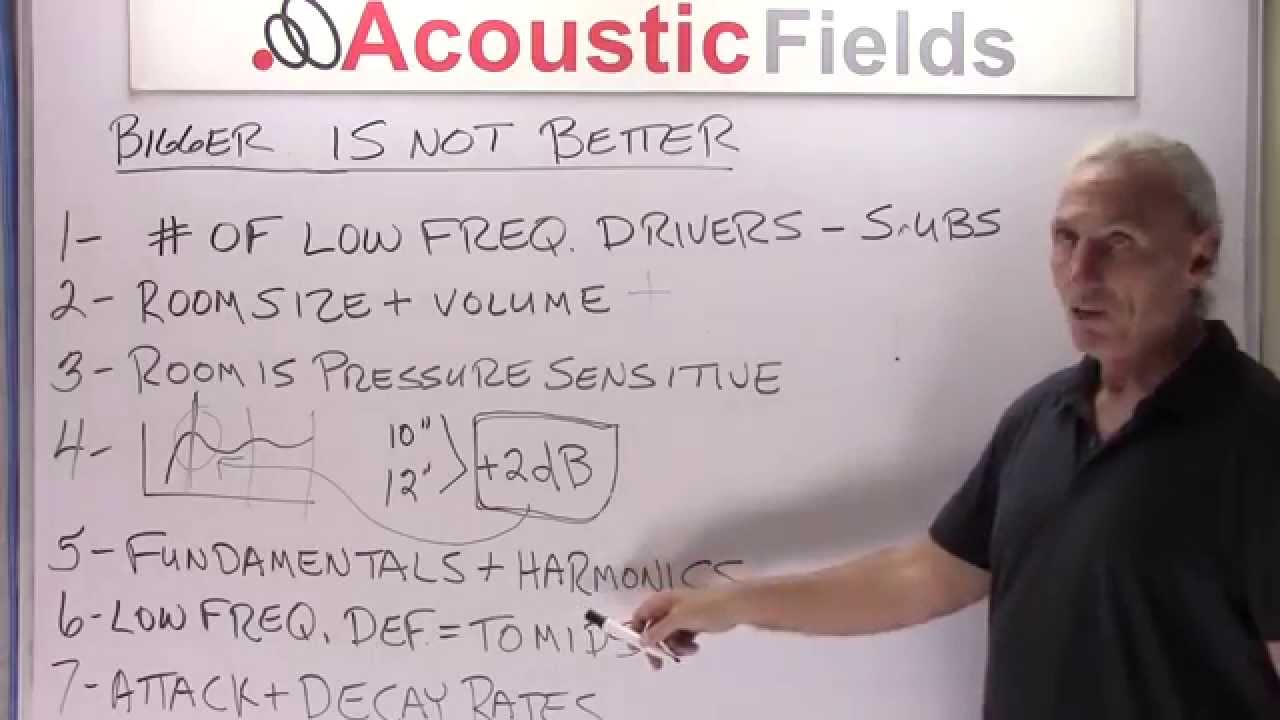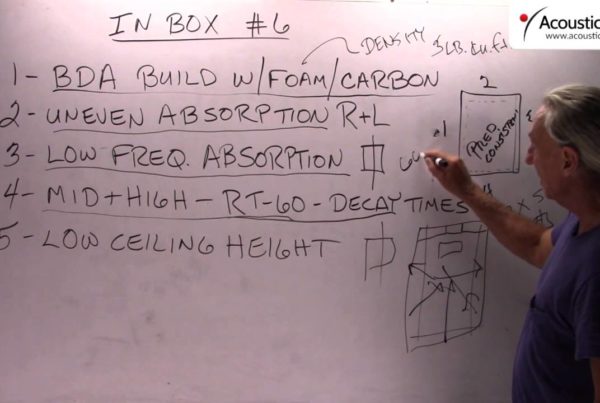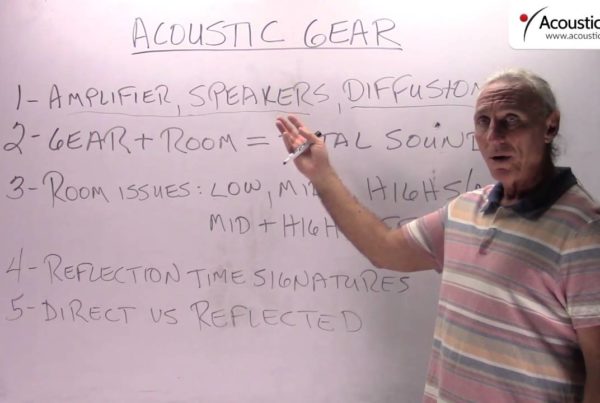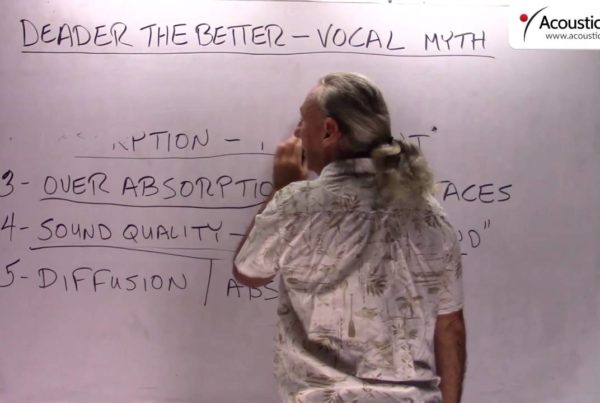Hi, everyone, Dennis Foley from Acoustic Fields, today we’re going to talk about bigger is not better. I get a lot of free room analysis forms submitted each day, 10,15 a day on the average and I see this issue constantly so I want to bring it up and let you know how much of a problem it is so that when you see it in your own room or you’re thinking about it in your room size and volume selections and system selections that you can be more aware of it.
Subs in particular, the number of low frequency drivers in a room is critical. Bigger sized subs, more subs are not necessarily the way to go. There is a relationship between the amount of energy that a room will hold based on its size and volume. You have to be aware of that relationship. You want more energy in the room? Make sure the room size and volume can handle it or you’re going to cause a whole plethora of other issues within the room.
The room is very pressure-sensitive. Based on its size and volume it can only hold so much energy at certain frequencies. Let’s look at an example. The difference between a 10 inch sub and a 12 inch sub is about 2 DB more in output. So we get more output, more energy from a 12 inch over a 10 inch.
What does that do to our response curve? Here is an average response curve in most small rooms. Big bump here. So are we going to take another 2 DB of energy and apply it here? Do we want more of that? I think we want less of that. Don’t forget that this is the fundamental and we have all the harmonics that go with it.
So not only are we exasperating or exaggerating our low frequency issues by adding more energy in a room that has a certain size and volume, but we’re also impacting the harmonics structure for the second, third order harmonics of the room. So you have to be very careful to match these up.
Fundamentals in harmonics, very, very critical. It’s not just this one frequency that you’re impacting. If you’re going to add more energy to a problem, you’re going to get problems throughout the harmonics structure of the room and frequency response also.
What do we want from our low frequencies? We want definition. We want the same definition that we get with our middle and high frequencies. Well, maybe not the same with the high frequencies but definitely the same with the middle frequencies. We want to be able to hear every note, we want every note to live and die on its own volition within the room. We don’t want the room contributing to its life span, we don’t want the room taking away from its life span. We want the room to let it live and die on its own volition.
And how do we do that? We do that by managing the attack and decay rates. And you’re not going to do that with foam and you’re not going to do that with building insulation. You have to have a physical structure that’s designed to work with pressure. Because this is a pressure-activated problem.
So bigger is not necessarily better when it comes to low frequency energy. So watch the number of subs in your room, go for the definition, watch the fundamental and the harmonic variances that you can get and strive for a good attack and decay rate.
In this graphic we’ve broken down some cubic volumes for you and given you an idea of what sub woofers work best. So I hope this helps. Remember bigger when it comes to subwoofers and low frequency drivers, not necessarily better. Thank you.
—
This is an unedited transcript from our video series from Acoustic Fields. There will be some errors in grammar and sentence structure that occur during this translation process.
For complete understanding and comprehension, please view the video which is included in this text. For any additional information regarding this topic or others relating to room acoustics, please contact us directly at:
P: 520 – 392 – 9486








Thanks for your valuable information on acoustics. Of all the stuff on the internet, this is the most technical and logical information I’ve seen.